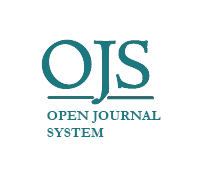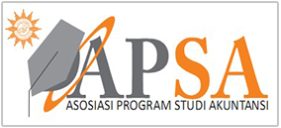Pengembangan Instrumen Investment Readiness Sebagai Pedoman Penilaian Kesiapan Pendanaan Start-Up Di Era Ekonomi Digital
DOI:
https://doi.org/10.22219/jrak.v14i1.25769Keywords:
Funding, Instrument, Investment Readiness, Start-upAbstract
Purpose: This research aims to develop instruments to measure start-up funding assessments. The dimensions of measuring funding and Investment readiness consist of eight dimensions adopted from the investment guide.
Methodology/approach: This research is based on solving specific problems by improving the instructional design process and developing new models, tools and procedures regarding Investment readiness instruments as guidelines for assessing start-up funding readiness in the digital economy era. An investment readiness instrument is advanced by holding a Focus Group Discussion (FGD) with experts in start-up investment.
Findings: The results of this study contribute to developing an investment readiness instrument as a guideline for assessing start-up funding readiness for the start-up.
Practical implications: The practical implication of this research is that investment readiness instruments can assist start-ups in assessing financial and non-financial performance, which is helpful for funding applications and start-up financing.
Originality/value: This research has social implications for investors and creditors in order to make relevant decisions regarding investment and funding for start-ups.
Downloads
References
Achimská, V. (2020). Start-ups, bearers of innovation in globalizing environment and their valuation. SHS Web of Conferences, 74, 01001. https://doi.org/10.1051/shsconf/20207401001
Bachtiar, P. P., Vandenberg, P., & Sawiji, H. W. (2022). Adb Briefs: City-Level Tech Startup Ecosystems and Talent Development in Indonesia. Adb Briefs, 4(100), 1–12.
Battisti, E., Alfiero, S., Quaglia, R., & Yahiaoui, D. (2022). Financial performance and global start-ups: the impact of knowledge management practices. Journal of International Management, 28(4). https://doi.org/10.1016/j.intman.2022.100938
Bergset, L. (2015). The rationality and irrationality of financing green start-ups. Administrative Sciences, 5(4), 260–285. https://doi.org/10.3390/admsci5040260
Colombo, M. G., D’Adda, D., & Quas, A. (2019). The geography of venture capital and entrepreneurial ventures’ demand for external equity. Research Policy, 48(5), 1150–1170. https://doi.org/10.1016/j.respol.2018.12.004
Colombo, O. (2021). The Use of Signals in New-Venture Financing: A Review and Research Agenda. Journal of Management, 47(1), 237–259. https://doi.org/10.1177/0149206320911090
Cooper, D. R., & Schindler, P. S. (2014). Business Research Methods 12th Edition. In Business Research Methods.
Cusolito, A. P., Dautovic, E., & McKenzie, D. (2021). Can government intervention make firms more investment ready? A randomized experiment in the western balkans. In Review of Economics and Statistics (Vol. 103, Issue 3). https://doi.org/10.1162/rest_a_00882
David, E. (2022). Global Startup Ecosystem Index 2022. 1–333.
Drover, W., Busenitz, L., Matusik, S., Townsend, D., Anglin, A., & Dushnitsky, G. (2017). A Review and Road Map of Entrepreneurial Equity Financing Research: Venture Capital, Corporate Venture Capital, Angel Investment, Crowdfunding, and Accelerators. Journal of Management, 43(6), 1820–1853. https://doi.org/10.1177/0149206317690584
Eka, R. (2023). Di Q4 2022, Startup Indonesia Bukukan Pendanaan Lebih dari $580 Juta. https://dailysocial.id/post/pendanaan-startup-indonesia-2022
Falik, Y., Lahti, T., & Keinonen, H. (2016). Does startup experience matter? Venture capital selection criteria among Israeli entrepreneurs. Venture Capital, 18(2), 149–174. https://doi.org/10.1080/13691066.2016.1164109
Festel, G., Wuermseher, M., & Cattaneo, G. (2013). Valuation of early stage high-tech start-up companies. International Journal of Business, 18(3), 216–231.
Fisher, G., Kotha, S., & Lahiri, A. (2013). Changing With The Times : An Integrated View Of Legitimacy And New Venture Life Cycles. Academy of Management Review, 41(3), 383–409. https://doi.org/https://doi.org/10.5465/amr.2013.0496
Fisher, G., Kuratko, D. F., Bloodgood, J. M., & Hornsby, J. S. (2017). Legitimate to whom? The challenge of audience diversity and new venture legitimacy. Journal of Business Venturing, 32(1), 52–71. https://doi.org/10.1016/j.jbusvent.2016.10.005
Frimpong, F. A., Akwaa-Sekyi, E. K., Sackey, F. G., & Saladrigues Solé, R. (2022). Venture capital as innovative source of financing equity capital after the financial crisis in Spain. Cogent Business and Management, 9(1). https://doi.org/10.1080/23311975.2022.2087463
Fuertes-Callén, Y., Cuellar-Fernández, B., & Serrano-Cinca, C. (2022). Predicting startup survival using first years financial statements. Journal of Small Business Management, 60(6), 1314–1350. https://doi.org/10.1080/00472778.2020.1750302
Gattringer, R., & Wiener, M. (2020). Key factors in the start-up phase of collaborative foresight. Technological Forecasting and Social Change, 153(January), 119931. https://doi.org/10.1016/j.techfore.2020.119931
Gentry, R. J., Dalziel, T., & Jamison, M. A. (2013). Who Do Start-Up Firms Imitate? A Study of New Market Entries in the CLEC Industry. Journal of Small Business Management, 51(4), 525–538. https://doi.org/10.1111/jsbm.12055
Gregory, G. H., & Chapman, C. (2012). Differentiated Instructional strategies: One size doesn′ t fit all. Corwin press.
Hechavarría, D. M., Matthews, C. H., & Reynolds, P. D. (2016). Does start-up financing influence start-up speed? Evidence from the panel study of entrepreneurial dynamics. Small Business Economics, 46(1), 137–167. https://doi.org/10.1007/s11187-015-9680-y
Hidayat, A. A., Juanda, A., & Jati, A. W. (2019). Pengaruh Asimetri Informasi Dan Leverage Terhadap Manajemen Laba Pada Perusahaan Pertambangan Yang Terdaftar Di Bursa Efek Indonesia Tahun 2016-2018. Jurnal Akademi Akuntansi, 2(2), 145–154. https://doi.org/https://doi.org/10.22219/jaa.v2i2.10511
Irjayanti, M., & Azis, A. M. (2012). Barrier Factors and Potential Solutions for Indonesian SMEs. Procedia Economics and Finance, 4(Icsmed), 3–12. https://doi.org/10.1016/s2212-5671(12)00315-2
Islam, M., Fremeth, A., & Marcus, A. (2018). Signaling by early stage startups: US government research grants and venture capital funding. Journal of Business Venturing, 33(1), 35–51. https://doi.org/10.1016/j.jbusvent.2017.10.001
Jensen, M. C., & Meckling, W. H. (1994). Agency Theory. Journal of Applied Corporate Finance, Summer.
Kim, B., Kim, H., & Jeon, Y. (2018). Critical success factors of a design startup business. Sustainability (Switzerland), 10(9), 1–15. https://doi.org/10.3390/su10092981
Kim, Y., & Smith, D. (2017). Pedagogical and technological augmentation of mobile learning for young children interactive learning environments. Interactive Learning Environments, 25(1), 4–16. https://doi.org/10.1080/10494820.2015.1087411
Klonowski, D. (2012). Liquidity gaps in financing the SME sector in an emerging market: Evidence from Poland. International Journal of Emerging Markets, 7(3), 335–355. https://doi.org/10.1108/17468801211237072
Lee, S. (2022). The myth of the flat start-up: Reconsidering the organizational structure of start-ups. Strategic Management Journal, 43(1), 58–92. https://doi.org/10.1002/smj.3333
Li, P. (2017). Funding Challenges of Latin American Women Start-up Founders in the Technology Industry. Cross Cultural & Strategic Management, 23(1), 42–77. https://doi.org/https://doi.org/10.1108/CCSM-03-2016-0072
Li, Z., Lu, S. Q., Ryan, J. K., & Sun, D. (2021). Impact of Organizational Structure on Development Strategy under Equity-Based Incentives. Production and Operations Management, 30(4), 984–996. https://doi.org/10.1111/poms.13288
Lukkarinen, A., Teich, J. E., Wallenius, H., & Wallenius, J. (2016). Success drivers of online equity crowdfunding campaigns. Decision Support Systems, 87, 26–38. https://doi.org/10.1016/j.dss.2016.04.006
Mason, C., Botelho, T., & Harrison, R. (2016). The transformation of the business angel market: empirical evidence and research implications. Venture Capital, 18(4), 321–344. https://doi.org/10.1080/13691066.2016.1229470
Mason, C., Botelho, T., & Harrison, R. (2019). The changing nature of angel investing: some research implications. Venture Capital, 21(2–3), 177–194. https://doi.org/10.1080/13691066.2019.1612921
Mason, C., & Kwok, J. (2010). Investment readiness programmes and access to finance: A critical review of design issues. Local Economy, 25(4), 269–292. https://doi.org/10.1080/02690942.2010.504570
Mason, C. M., & Harrison, R. T. (2001). ’Investment readiness: A critique of government proposals to increase the demand for venture capital. Regional Studies, 35(7), 663–668. https://doi.org/10.1080/00343400120075939
Miller, A., Scahill, S., & Warren, L. (2019). Investor motivations of a New Zealand biopharma start-up: Angels and crowdfunders. International Journal of Entrepreneurship and Innovation, 20(4), 252–262. https://doi.org/10.1177/1465750319877391
Mitteness, C., Sudek, R., & Cardon, M. S. (2012). Angel investor characteristics that determine whether perceived passion leads to higher evaluations of funding potential. Journal of Business Venturing, 27(5), 592–606. https://doi.org/10.1016/j.jbusvent.2011.11.003
Nigam, N., Benetti, C., & Johan, S. A. (2020). Digital start-up access to venture capital financing: What signals quality? Emerging Markets Review, 45(January), 100743. https://doi.org/10.1016/j.ememar.2020.100743
Pallant, J. (2010). SPSS Survival Manual. In McGraw-Hill Education.
Pollman, E. (2019). Penn Law : Legal Scholarship Repository Startup Governance. 155–221.
Pompa, C. (2013). Literature Review on the Impact of Business Incubation , Mentoring , Investment and Training on Start-up Companies. February.
Pugliese, R., Bortoluzzi, G., & Balzano, M. (2022). What drives the growth of start-up firms? A tool for mapping the state-of-the-art of the empirical literature. European Journal of Innovation Management, 25(6), 242–272. https://doi.org/10.1108/EJIM-03-2021-0163
Richey, R. C., & Klein, J. D. (2014). Design and Development Research. In Handbook of Research on Educational Communications and Technology: Fourth Edition. https://doi.org/10.1007/978-1-4614-3185-5
Sari, M., Jufrizen, & Deli, L. (2020). Testing Model of Financial Management Ability of Small and Medium Enterprises (Smes). Jurnal Reviu Akuntansi Dan Keuangan, 10(3), 584–601. https://doi.org/10.22219/jrak.v10i3.13331
Schnackenberg, A. K., & Tomlinson, E. C. (2016). Organizational Transparency: A New Perspective on Managing Trust in Organization-Stakeholder Relationships. Journal of Management, 42(7), 1784–1810. https://doi.org/10.1177/0149206314525202
Snyder, H. (2019). Literature review as a research methodology: An overview and guidelines. Journal of Business Research, 104(July), 333–339. https://doi.org/10.1016/j.jbusres.2019.07.039
Team, G. (2020). Startup Ecosystem in Indonesia: Key Ingredients, Challenges, and Strategies.
Tracey, M. W. (2009). Design and development research: A model validation case. Educational Technology Research and Development, 57(4), 553–571. https://doi.org/10.1007/s11423-007-9075-0
Tracey, M. W., & Richey, R. C. (2007). ID model construction and validation: A multiple intelligences case. Educational Technology Research and Development, 55(4), 369–390. https://doi.org/10.1007/s11423-006-9015-4
Ugochukwu Okwudili Matthew, Jazuli Sanusi Kazaure, Ado Saleh Kazaure, Ubochi Chibueze Nwamouh, Andrew Chinonso Nwanagwaugwu, & Oluwafemi Olalere Olawoyin. (2022). ICT Policy Implementation as Correlate for Achieving Educational Sustainability: Approaching Development in Multi ICT Dimensions. Journal of Information Technology and Digital World, 4(4), 250–269. https://doi.org/10.36548/jitdw.2022.4.001
UK AIID. (2020). Investment Guide : Investment Readiness. Innovate UK, June, 1–10.
Wang, Y. (2016). What are the biggest obstacles to growth of SMEs in developing countries? – An empirical evidence from an enterprise survey. Borsa Istanbul Review, 16(3), 167–176. https://doi.org/10.1016/j.bir.2016.06.001
Wray, F. (2015). Venture capital and investor readiness in a post-crisis and state-rescaling context: Revisiting the North East of England. Local Economy, 30(4), 389–404. https://doi.org/10.1177/0269094215582391
Downloads
Published
Issue
Section
License
Copyright (c) 2024 Denies Priantinah, Ratna Candra Sari, Patriani Wahyu Dewanti, Arin Pranesti

This work is licensed under a Creative Commons Attribution-NonCommercial-ShareAlike 4.0 International License.

Jurnal Reviu Akuntansi dan Keuangan is licensed under a Creative Commons Attribution-NonCommercial-ShareAlike 4.0 International License.
Authors who publish with this journal agree to the following terms:
- Authors retain copyright and grant the journal right of first publication with the work simultaneously licensed under a Creative Commons Attribution-NonCommercial-ShareAlike 4.0 International License that allows others to share the work with an acknowledgement of the work's authorship and initial publication in this journal.
- Authors are able to enter into separate, additional contractual arrangements for the non-exclusive distribution of the journal's published version of the work (e.g., post it to an institutional repository or publish it in a book), with an acknowledgement of its initial publication in this journal.
- Authors are permitted and encouraged to post their work online (e.g., in institutional repositories or on their website) prior to and during the submission process, as it can lead to productive exchanges, as well as earlier and greater citation of published work (See The Effect of Open Access).










